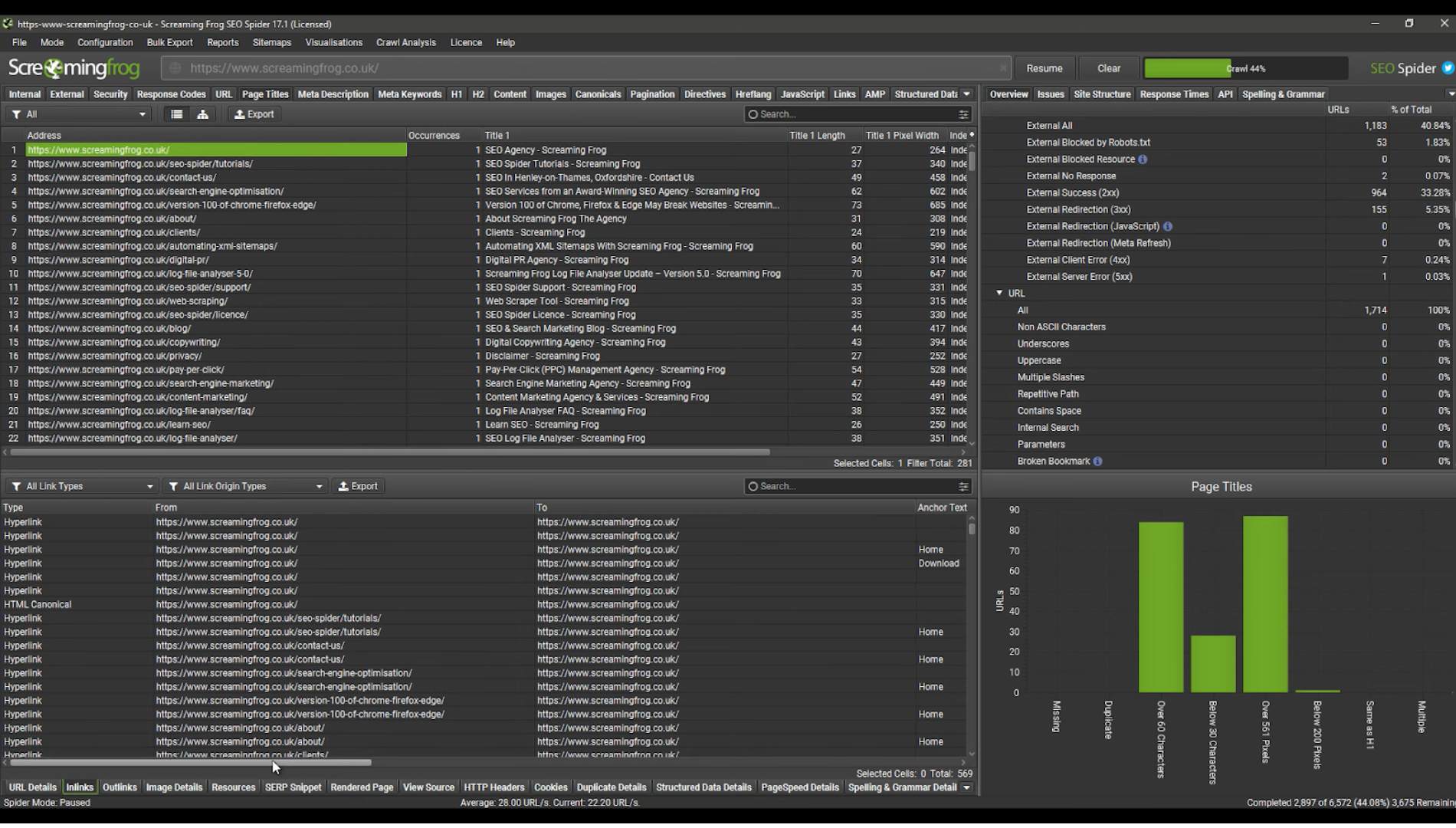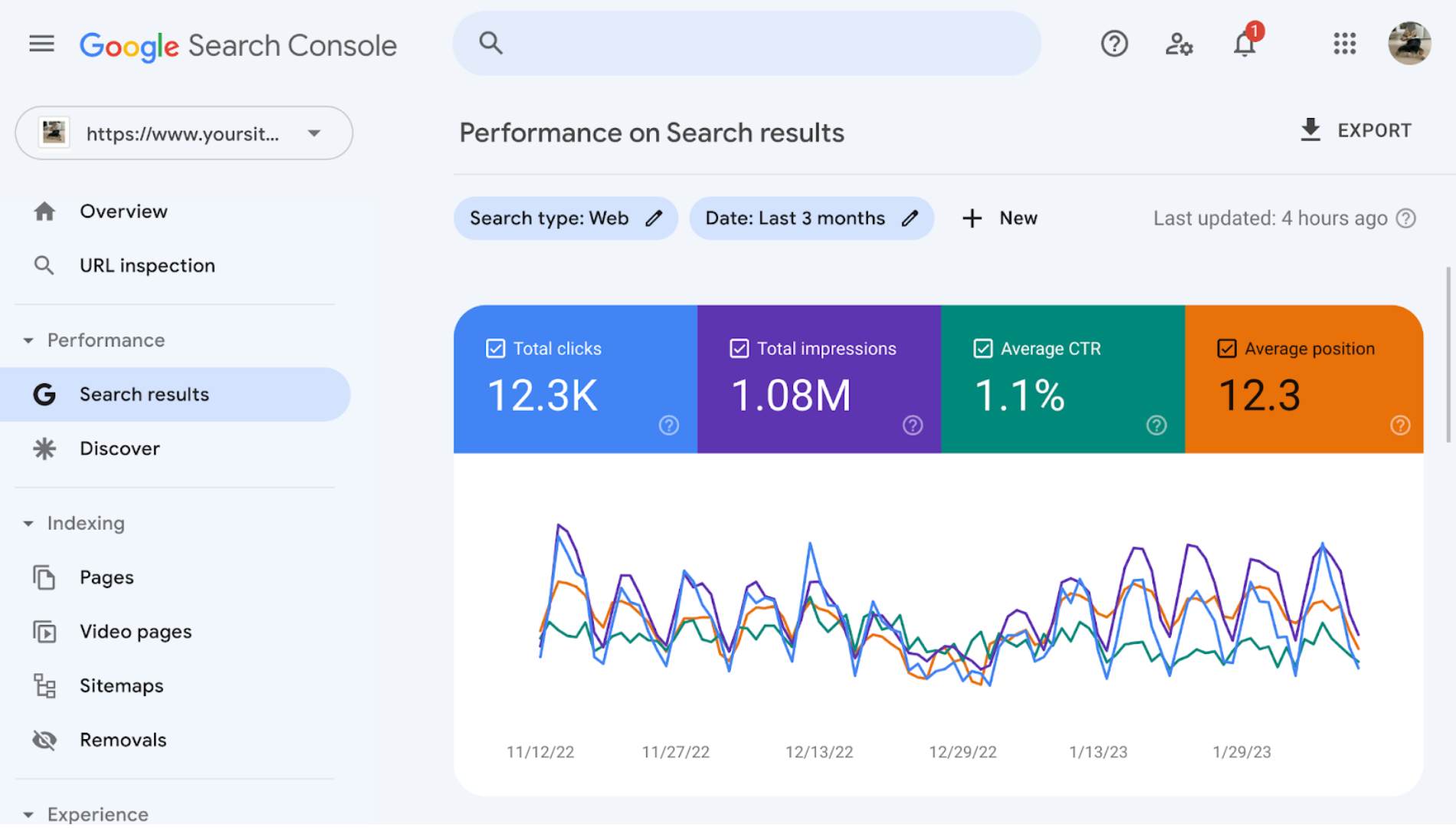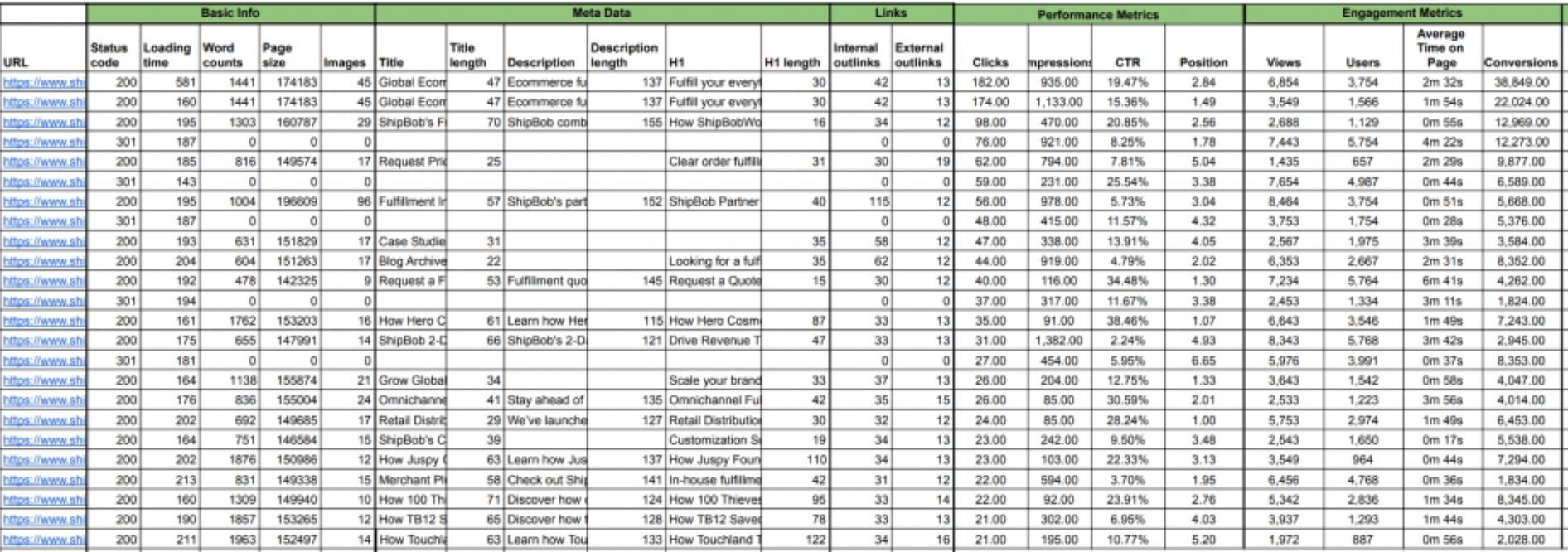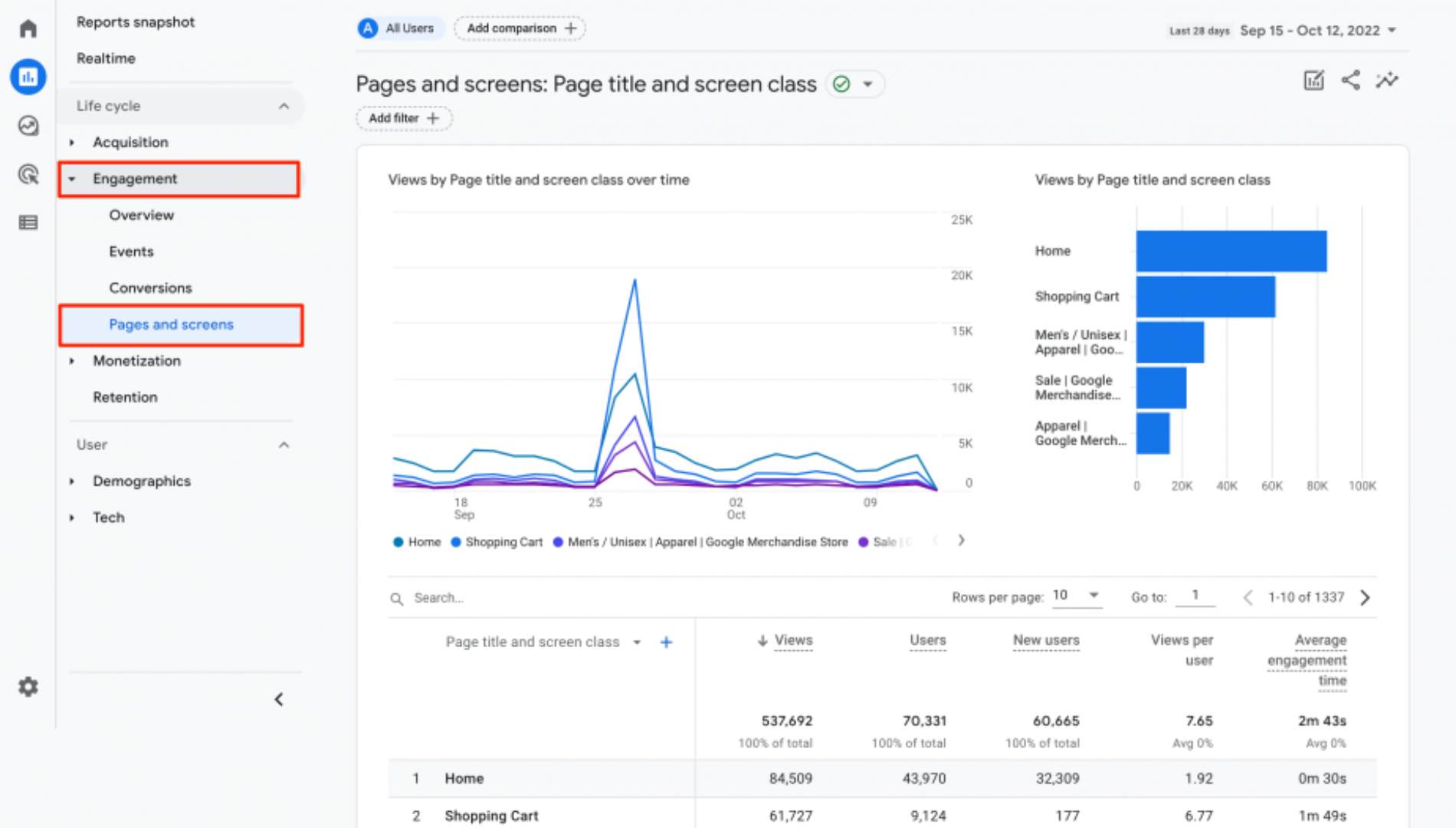Ever wondered why some websites stand out while others fade into the digital background? It's not just about having a visually appealing website. It's about expressing your ideas the right way, and your website content holds the key to making that happen.
Think of your website content as a conversation with your audience. But like with every conversion, a few chats will stand out, some may have been forgotten, some, while others might have grown stale, which is why you need a content audit.
A website content audit is not a new concept: 61% of companies that ace content marketing conduct content audits once or twice a year. Regularly evaluating and optimizing your website content will help you maintain your content relevance and ensure a positive user experience.
This article will delve further and discuss the four key steps you should follow to conduct an effective website content audit. Let’s get started!
Creating an inventory of all the content
Creating an inventory of all the content on your website is a foundational step in conducting a thorough content audit. This process involves compiling a comprehensive list or database that includes details about every piece of content hosted on your site.
A thorough content inventory will provide a clear understanding of the scope and scale of your website's content, making it easier to manage and assess.
Start by collecting and recording your web pages' URLs. This is easy to do manually if your site is small enough. This is easy to do manually if your site is small enough. You just need to copy the website and paste it into a content audit spreadsheet, shown below, either on Excel or Google Sheets.
However, if you’re running a content audit for a large website, you will need some extra help capturing the URLs. You can leverage content management systems (CMS) or specialized tools like Screaming Frog that can help with content inventory.

After you have the URLs, you can use a spreadsheet to create a content catalog. You can have various categories including the meta title, meta description, word count, author, date published or updated, content type, and content formats in each URL. Again some tools like ScreamingFrog can do this for larger websites.
Ensure that your inventory features the different types of content you have on your website. The key ones include blog posts, landing pages, product pages, images, videos, and downloadable resources.
Evaluate each piece of content
This step involves delving into the analytics, user engagement metrics, and qualitative aspects of your content to make informed decisions about its future.
Thoroughly evaluate and record key performance metrics for every content item like page views, bounce rates, and average time spent on a page. These will help you spot content patterns and identify the high-quality content that resonates with your target audience or what’s not working.
Assess how users interact with your content. Look at social shares, comments, and any other indicators of audience engagement. Understanding user behavior provides insights into the content's effectiveness.
Also, examine the content's SEO performance. Check for keyword optimization, meta tags, and other SEO elements. Identify opportunities for improvement to enhance search engine visibility. For instance, outdated content, broken links, irrelevant focus keywords, and low-quality content may be harming your website's credibility, which then hurts your ranking.
For this process, you’ll need to get your content’s data from different sources and then manually add them to your spreadsheet, since there’s no one tool that’s comprehensive enough.
However, you can use various online tools to simplify your work. For instance, use Google Analytics to monitor web pages. You can see a web page's organic traffic, on-site engagement, and conversion metrics.
You can also use Google Search Console to see your content’s SEO metrics. The tool helps you see what search queries bring users to specific pages. It also analyzes your site’s impression and average position in Google search results.

You can use their URL inspection tool to see details on how your website pages are crawled, indexed, and how they appear to users..
Make decisions about each piece of content
The evaluation phase sets the stage for making informed decisions about the future of each piece of content. This step helps ensure that each piece of content aligns with your current business goals, target audience, and overall content strategy.
Based on the insights gained, you can categorize content into different action items:
Update
Some content will definitely be outdated and no longer performing well but you feel or the audit shows there’s still hope for it. For those in this category, you can enhance the content with new information, updated statistics, or improved visuals.
Your or your content team can also merge similar or related pieces of content to create a more comprehensive and impactful resource. This will make it more relevant to the audiences, which will get search engines’ attention.
Repurpose
You can also use content that has been performing well for a while to create other formats of content that continue to drive organic traffic to your website. You can create a video from high-performing blog content, or downloadable content assets that align with the content topic.
For instance, if the blog post is on SaaS content writing you can create a content checklist or a content writing for SaaS guide.
Keep
There is content that’s either new or still relevant and performing well, that you don’t need to alter yet. This content will go under the “Keep” category. It often includes evergreen content, which includes product reviews, how-to, and listicles content, FAQs, customer success stories, and general details about your product or business.
New content
A website content audit will also help you identify content gaps and opportunities for creating fresh, valuable content that aligns with current trends and user needs. Include any of these new content ideas in this category. If there’s a lot of content to create, encourage your content team to use enterprise-generative AI to lighten their workload.
Remove
No matter how much you try, some pieces can’t be improved. In these cases, the best solution is to delete them, so they can stop derailing your web content performance.
These types of content include outdated, irrelevant, or redundant content.
Regularly revisiting and adapting these decisions will contribute to the ongoing success of your content strategy. The step is also pivotal in maintaining an overall high-quality online presence and optimizing the user experience.
Implement the changes
This is the phase where the decisions made about each piece of content are put into action.
This step requires teams to work collaboratively to update, optimize, or remove content based on the insights gained from the audit. Content creators may need to revise or rewrite content, designers will enhance visual elements, and developers will handle technical modifications.
Ensure you establish a rollout plan to stagger the implementation of changes. Prioritize updates that can be executed quickly and efficiently, and plan for more significant changes accordingly. This helps manage workload and ensures a controlled implementation process.
Develop a communication strategy to inform your audience about significant content changes, ensuring users are aware of the updates and understand the reasons behind them. This could be via blog posts, email newsletters–you can use an email finder to find core email addresses that are not on your list–, or social media posts.
After implementing changes, closely monitor the performance of the updated content. Web content monitoring will help you track relevant metrics to assess the impact of the modifications. Be prepared to iterate the changes based on ongoing data and user feedback, ensuring high content quality.
In closing
A well-executed content audit ensures that your website remains a valuable asset that aligns with your business objectives and provides a seamless, engaging experience for your visitors.
You can run a comprehensive content audit process with the steps outlined above. Start by creating an inventory of content on your site, then evaluate each content piece, make decisions about each one of them, and implement the changes.
As you navigate through these steps, remember that the digital landscape is ever-evolving. Therefore, regularly revisit your content audit strategy, adapt to emerging trends, and stay responsive to your audience's needs.
A successful content audit is not a one-time endeavor; it's a commitment to continuous improvement.
James Westfield is the Marketing Manager for Writer, an AI writing platform designed for teams. He has over 10 years of experience in the industry. When James isn't in the office, you can find him on the golf course.



